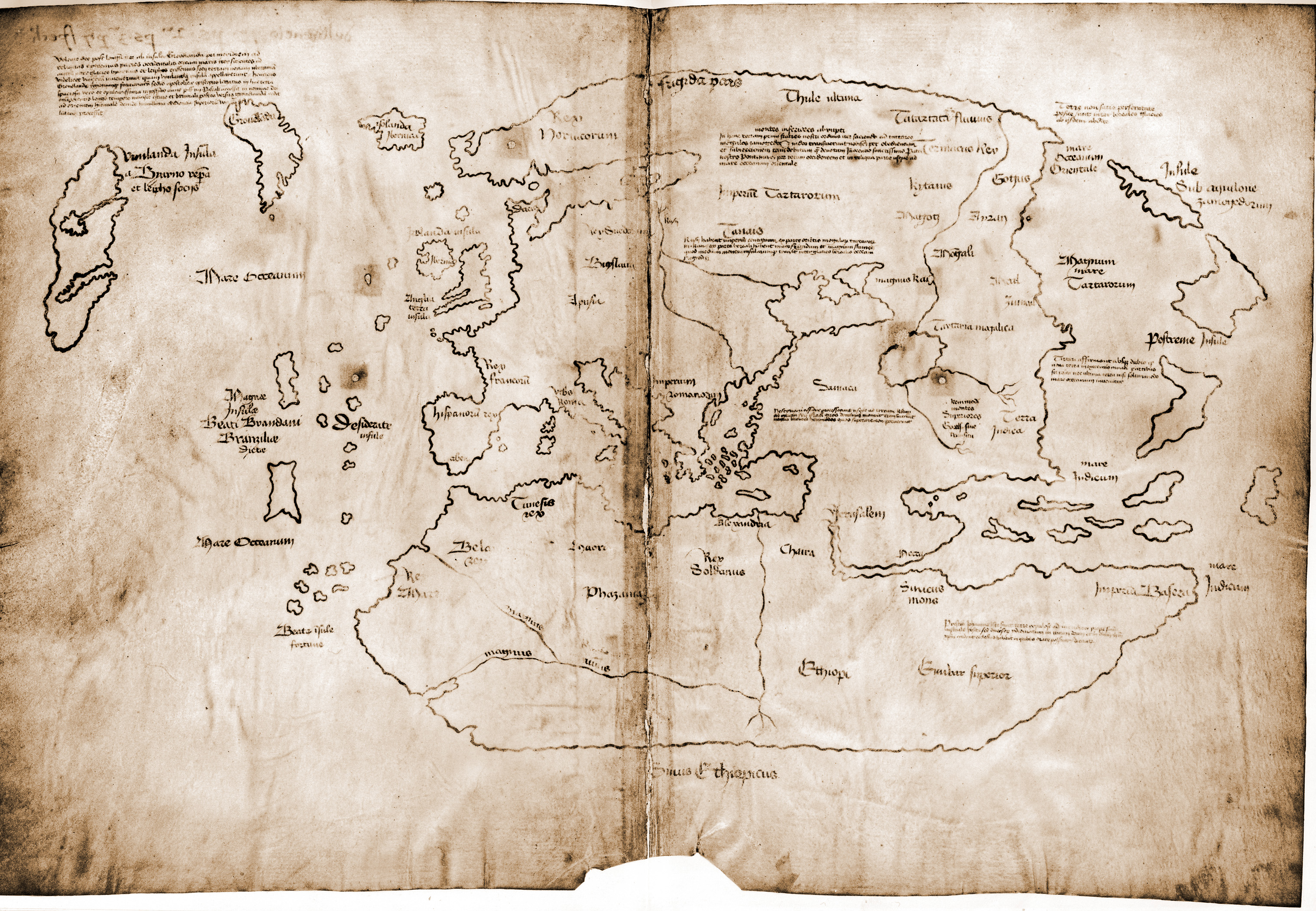| Year | What |
|---|---|
| around 932 |
Norgegian Gunnbj÷rn Ulfsson also named Gunnbj÷rn Ulf-Krakuson was sailing from Norway
to Iceland when blown off course to Greenland but did not land. The exacte date of
his jurney is not known. |
| 978 |
Norgegian SnŠbj÷rn Galti was very likely the first European who placed his feet on
Greenland. He tried to settle but without success. |
| 981 |
Vikings under Eric Thorvaldsson (EirÝkr Ůorvaldsson or Eric the Red) came to Greenland.
Eric the Red was exiled from Iceland for punishment. They settled for three years at
what is now Julianehaab, Greenland. |
| 985 or 986 |
By accident Bjarni Herjˇlfsson arrived at the Canadian coast but did not land. He was on
the way to Greenland to see his parents when he was drifted west by a storm. Bjarni was
son of Bard Herjˇlfsson and Thorgerd. His parents lived in Iceland but went to Greenland
so about 985. His findings of land was known in Greenland and in Norway but did not found
interest for more than 10 years.
|
| 1000 |
Islandic sagas which were written in the 13th century give different
versions how Life Ericsson (son of Eric the Red) arrived to America. But
it is most likely that in or about the year 1000 he landed with his ships and a crew
of 35 peoples at different spots in north America which were called Helluland (Land of stones) - probably Baffin Island Markland (Land of Forest) - probably Labrador Island and It is believed that this was Labrador and Baffin Island Vinland (Land of vin and warm). First time written in 1075 by Adam von Bremen. Archeologist now believes that this refers to L'Anse aux Meadows in the almost north of Newfoundland. A viking settlemend is documented at that place Sagas sais Leif Ericson bought Bjarni's ship for this voyage. |
| 1001 |
Leif's winter camp 1000/1001 was probably at Cape Bauld (Newfoundland) and was called
Leifsb˙ir. The sagas sais that he spent also the following winter there before returning
to BrattahlÝ in Greenlan.d Tyrker or Tyrkir a German and probably a thrall one was found drunk on what Life is was calling "wine-berries". (This could be squashberries, gooseberries or cranberries grewing wild in the area and which can undergo a fermentation.) |
| 1003 or 1004 |
Thorvald Ericson (brother of Leif Ericson) and 30 men sailed to Vinland and spent the
winter at Leif's camp. It is said that Thorvald attacked nine local peoples sleeping.
Eight were killed but the ninth escaped. When he was comming back with force they
(SkrŠlingsas the Sagas naemed them - means means savages) killed Thorvald in 1005.
The other vikings returned to Greenland in spring 1006. |
| 1007 or later |
Thorstain Ericson (brother of Leif Ericson) sailed to Vinland to retrieve Thorvald's body
and came back the same year. |
| 1009 or 1013 |
Thorfinn Karlsefini (Ůorfinnr Karlsefni, Icelandic trader) arrived with three
ships and 160 (or 250) settlers and established a settlement in Vinland. Due to a
cruel winter they went south to Straumfjord and later changed to Straums÷y. they four
traded with the SkrŠlings for milk and red cloth. But finaly went into conflicts with
the natives and left. Freydis Eiriksdottir and Thorvald Eriksson (half-sister and half-brother of Leif Eriksson) were among these settlers. Snorri Gurisson (Snorri Thorfinnsson, Snorri Ůorfinnsson and sometimes named Snorri Karlsefnisson) born by Karlsefni's wife GurÝr Ůorbjarnardˇttir (GurÝr EirÝksdˇttir) is believed to be born in the Americas. In the Vinland sagas it is said that Snorri was 3 years old, when his family left Vinland. Later he became important for the Christianisation of Iceland. It is said that he has build the first church of Glaumbaer. The first bishops of Iceland were descendants of Snorri. Thorlak Runolfsson, bishop of Skalholt, was a son of Snorri's daughter Hallfrid and Brand SŠmundarsson, bishop of Hˇlar, was the son of Yngvild, wife of Snorri's son Thorgeir. |
| 1075 |
In his work "Gesta Hammaburgensis" of Adam von Bremen the name "Vinland" appeared for the
very first. |
| 1117 or 1121 |
Eric Upsi (Eric Gnupsson), bishop of Greenland went to Vinland to reform and returned
in 1118 (Island Annals of 1121) |
| until 1400 |
Though sporadic voyages for timber could have lasted as long as 400 years ther was no
more settlement attempt.
Prouve are a Norwegian coin from King Olaf Kyrre (1066 - 1080) found in an archeological
site in Maine. In 1347 a ship with timber back to Greenland was blown to Iceland
(Iceland Annals form 1347). |
| Today | About 350 Icelanders carries a lineage known as C1, usually seen only on Asians and
Native Americans. The best explanation for that errant lineage lies with an American
Indian woman who was thaken back to Icelande some 500 years before Columbus. |
